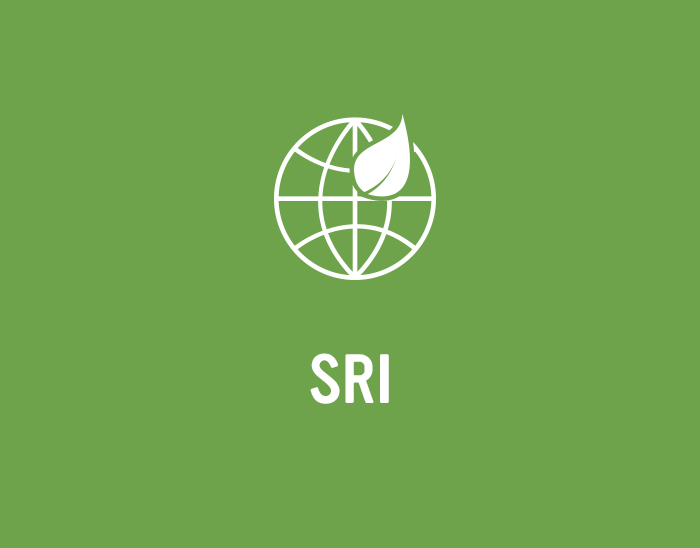
Major-bank sustainability focus: Westpac
Westpac Banking Corporation (Westpac) has an extensive history of engagement with and commitment to environmental, social and governance (ESG) goals. But it is not resting on its laurels, as the way the bank is thinking about the future of sustainability demonstrates.
Vision: to be one of the world’s great service companies, helping our customers, communities and people to prosper and grow
Westpac has a legitimate claim to be an Australian banking pioneer in the sustainability sector, and indeed one of the world leaders. It put out its first report on sustainability in 2002, in the process becoming the first Australian bank to do so. Even before this, in the 1990s Westpac was one of the first organisations to get involved in the Australian government’s Greenhouse Challenge of voluntary greenhouse-gas reporting.
Westpac has now completed 16 years of sustainability reporting as part of its suite of annual reporting, and in September 2017 the latest iteration of the Dow Jones Sustainability Index (DJSI) rated Westpac as the world’s most sustainable bank globally for the fourth year running and the 10th year overall. The DJSI is a key global benchmark for corporate sustainability and Westpac is not just Australia’s leading bank in the index but also the shining light for the nation across sectors (see box below).
Siobhan Toohill, group head of sustainability at Westpac in Sydney, says the starting point for the bank is having a clear understanding of what sustainability means in a changing world. She points to the emphasis Westpac placed in its first sustainability strategy on the idea of a bank’s role in ensuring each generation “lives better than the last”.
This overarching goal continues to define how a sustainability strategy is developed across the bank. For instance, while environmental considerations are clearly critical as the world confronts the reality of climate change and the immediate need for the corporate sector to play its part in mitigation, this is far from the only aspect of an ESG approach defined by a desire to promote an ongoing upward prosperity trajectory.
In looking at how Westpac is looking to take sustainability forward, Toohill tells KangaNews aspects such as promoting financial literacy and social inclusion are equally integral to the whole. In fact, engagement with environmental issues is a product of the central purpose rather than a driver of it.
This approach also encapsulates significant governance commitments within the bank. Westpac is a supporter of the Banking and Finance Oath, for instance – a set of principles for individuals in the sector that seeks to improve society by raising moral and ethical standards within banking.
Westpac’s benchmark performance
On 7 September 2017, Westpac Banking Corporation (Westpac) received the accolade of the world’s most sustainable bank in the latest Dow Jones Sustainability Indices (DJSI) review. Westpac says its long-term market-leading performance in the index suite highlights its commitments on sustainability.
The 2017 DJSI review marks the fourth year running in which Westpac is rated the leading bank globally, the 10th time it has taken top spot overall and the 16th consecutive year in which it has qualified for the global index.
To put this achievement in context, there are 28 banks in the DJSI World Index for 2017, while the index from 2001 – when Westpac first joined – included 21. Just six featured on both. On this bases, Westpac is an undeniable national champion in the DJSI.
Only one other Australian company – Mirvac Group (Mirvac) – took top spot for its sector in the DJSI for 2017. While impressive, this is the first time Mirvac is rated the world’s most sustainable property-sector company.
Building the strategy
Although Australia emerged from the financial crisis in better shape than most developed-world nations, it is still confronting many of the same change agents. Income inequality, sluggish wage growth and dissatisfaction with the political landscape are all evident in Australia. The need for decarbonisation is playing out against this backdrop, in a nation that features among the world’s biggest commodity producers – including fossil fuels.
All this plays into Westpac’s thinking around sustainability. “Contemplating how we continue to push forward on sustainability we’ve reflected on an environment in which people may find life difficult, and the role a bank can best play. For example, housing affordability is tougher and people are more conscious of it than they have been in the past,” Toohill comments. “But we are also really mindful of our role in supporting vulnerable Australians. We have been highlighting this in our sustainability programmes more so than we have done in the past.”
Describing the world today as “a really interesting time for us to stop and pause”, Toohill refers again to the essential premise of sustainability as helping future generations have a better standard of living. This outcome might have been taken for granted as recently as a decade or two ago but now appears to be at significant risk. Toohill continues: “Helping the next generation live better than the last is a really difficult concept to think about right now, but we don’t shirk away from doing so. Now, more than ever, we are focused on how we support this big idea.”
In the past, the bank’s sustainability focus has been on demographics, economic solutions to environmental challenges and helping people have a better relationship with money. According to Toohill, the big-picture thinking is now about clearer, more specific guidance on similar issues, and a stronger focus on serving the needs of customers.
She explains: “We’re now looking to place a stronger focus on helping people really understand their money and making sure they have the right solutions in place for them. We’re also thinking how we as a bank can be there when life throws a curve ball. And finally, it’s about being forward looking – helping everyone prepare for the future.”
Looking ahead
When it comes to better financial decisions, Toohill says Westpac’s aim is to help people increase their own financial capabilities but also ensure they have the right products and services to meet their needs best. As an example of a real-world outcome of the principle, she points to a new credit-card product Westpac launched in 2017 that responds to customer concerns by offering a low credit limit and a lower interest rate.
The bank continues to work very closely with groups like Mission Australia and the Salvation Army, because it believes it can have an even wider impact on financial literacy via relationships of this type. This complements the work of Westpac’s own financial-literacy group, the Davidson Institute.
Toohill explains: “It’s about partnering for a deeper impact, but we are also being quite targeted in how we do this. What we want to do when we’re teaming up with a large organisation is find out how we can best work together to help the more vulnerable Australians in the areas we know best – which is around financial capability. It’s about collaborating and getting the optimal outcome together.”
On the idea of supporting people when they need it most – that arguably speaks most to the social backdrop informing the revised approach. Social issues like housing affordability relate to the potential virtually every bank customer has of becoming financially vulnerable, and thus to a bank’s possible role in adding value for people in stressed circumstances.
Toohill explains: “Crises can happen to anyone. It might be because someone in the family is becoming sick, it could be a divorce, retrenchment or a death in the family. Finance always comes up during life’s critical moments, so we want to think about how we can be there at these times – to provide the necessary support and ensure people and their families get access to their finances at key moments.”
The precise nature of Westpac’s role is not just a set of principles determined exogenously by a group strategy team. The bank is using its own data in ongoing research to help it identify when problems are likely to happen, how it can lift clients out of them faster and then how it can help make sure they stay out of trouble in future.
The goal of helping create a more prosperous nation has the biggest forward-looking element. It aims to address the change Australia faces as a nation – including the impacts of technology and climate change.
For instance, Westpac wants to have a central role in building the workforce of the future by understanding how it can best support its own employees to have the right skills in place for the changing nature of work. “We know work is going through a significant rate of change right now so there’s a lot to be done around building different kinds of skills,” Toohill comments.
Climate-change solutions
Included here, too, is the work Westpac has in place around climate-change solutions. This includes a commitment to fund A$20 billion (US$15.8 billion) of climate solutions by 2020 and A$25 billion by 2030. The numbers are not guesswork. Westpac engaged ClimateWorks Australia to research what would be an appropriate scale for its own funding contribution, with these figures being the end point of this process.
The bank’s climate-change policy, launched in April this year, adds specific goals around how Westpac will lend to climate solutions. It has specific commitments to supporting mechanisms like climate bonds, including to facilitate up to A$3 billion of climate-change solutions via green bonds and similar structures by 2020. It also sets out more specific lending criteria – in line with working towards net carbon zero and building on Westpac’s climate-scenario analysis undertaken in 2016.
“In the same way we are backing the growth of climate-change solutions, we also want to continue our role in backing housing-affordability solutions,” Toohill adds. “This includes continuing our commitment to affordable housing lending – particularly via community-housing providers.”
Westpac is also reaffirming its desire to invest in ideas and people with the capacity to shape Australia including organisations, companies and individuals. In this context, Toohill highlights the Westpac Bicentennial Foundation and its commitment to backing an additional 100 scholars each year. By 2020, the foundation will have a cohort of 500 scholars receiving support from the bank.
Implementation and measurement
Good intentions are one thing, but Westpac says it wants to understand and measure the real-world outcome of its sustainability commitment. Toohill’s team is a “centre of excellence” at the bank and sits within corporate affairs. There are also sustainability leads in different parts of the organisation. For instance, Michael Chen is head of sustainability within Westpac Institutional Bank in Sydney.
Toohill explains: “What’s really important is that my team in corporate affairs is working in partnership with the different business units. Working like this, as a broader sustainability team sitting across the group, means we are able to touch various parts of the organisation but are also able to listen to different parts of the group and share sustainability perspectives with them.”
This approach helps drive outcomes across the Westpac group. One example is the Australian Financial Health Index introduced by BT Financial Group in February 2017 (see box below).
Investment and ESG integration
When BT Financial Group (BTFG) – the asset-management arm of the Westpac Banking Corporation group – introduced its new investment access platform, Panorama, it made sure environmental, social and governance (ESG) considerations were at the heart of the new product.
Panorama is the fruit of a A$500 million (US$397.2 million) investment designed to deliver a market-leading integrated banking and wealth platform for management of and reporting on investments.
It allows financial planners, direct investors, accountants and anyone who administers or trades any financial product across BTFG to access everything from transaction services to reporting across all asset classes and financial products.
In line with its commitment to providing insights and information to help make more informed investment decisions, Panorama partnered with global research houses to integrate sustainability scoring on selected investments. The sustainability scores for investments are a set of scores which identifies a company’s recent performance in relation to ESG factors.
Impact measurement is also vital. For instance, the Westpac Foundation works with its community partners to measure the number of jobs that have been created via its social-enterprise initiatives.
On the issue of giving support when it matters most, Toohill says success is measured through customer feedback and retention – which itself demonstrates a way in which sustainability and business growth do not need to be mutually exclusive.
Outcomes like these are arguably mostly about success at a micro level. For the bigger picture, Westpac is exploring how it integrates the United Nations Sustainable Development Goals (SDGs) into its sustainability approach. It has identified where the goals sit within its sustainability strategy and is monitoring work about the best ways to monitor SDG delivery – tapping into emerging SDG reporting guidelines – and with the guidance of Westpac’s external stakeholder advisory council.
“We want to be very mindful of this ongoing research, but reporting has always been really important for us and, as we work on the current sustainability report we are looking at how we map back to the SDGs,” Toohill adds. “We have been measuring against many of these goals already and now we are looking at how we align with them even better.”
While the SDGs are broad principles and require interpretation to define specific implementation and performance outcomes, Toohill says their most positive aspect is the fact that there is now an agreed set of 17 goals that business, governments and civil society are focused on. Using the SDGs to underpin sustainability strategies directs the conversation.
For instance, improving financial decision-making relates to the SDGs of reducing inequality and education – helping people be more educated about the decisions they are making. Helping customers when they most need it is also informed by the SDG covering inequality, and by the partnership goal.

WOMEN IN CAPITAL MARKETS Yearbook 2023
KangaNews's annual yearbook amplifying female voices in the Australian capital market.













